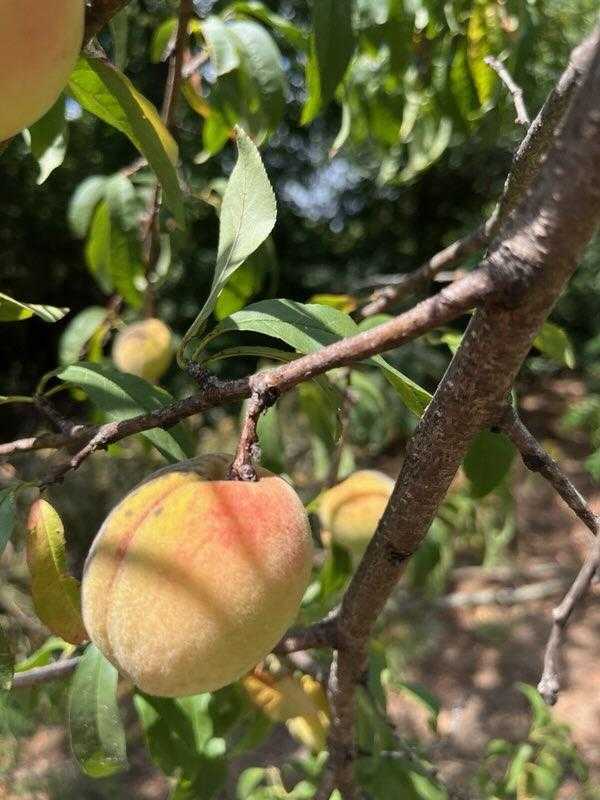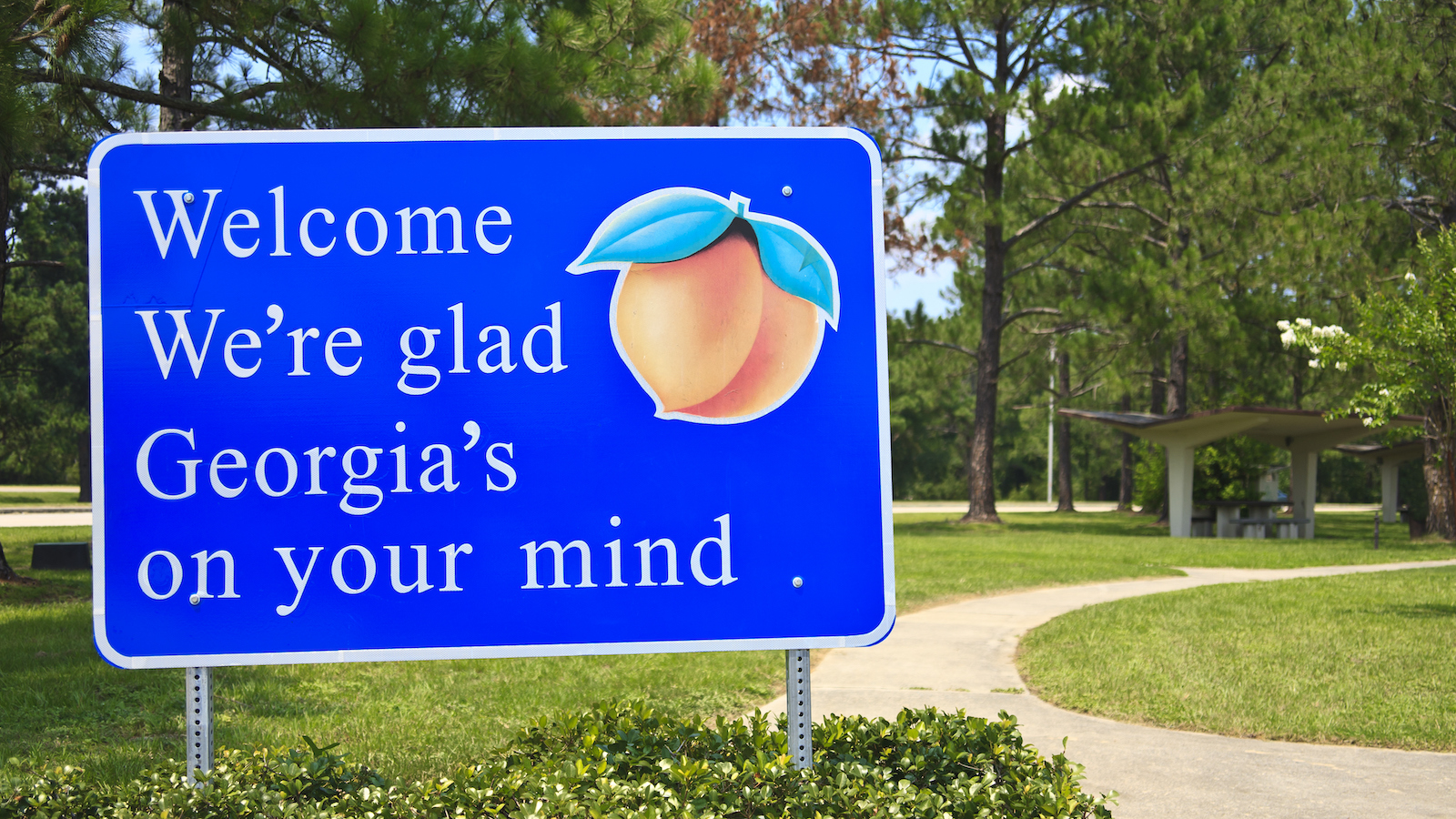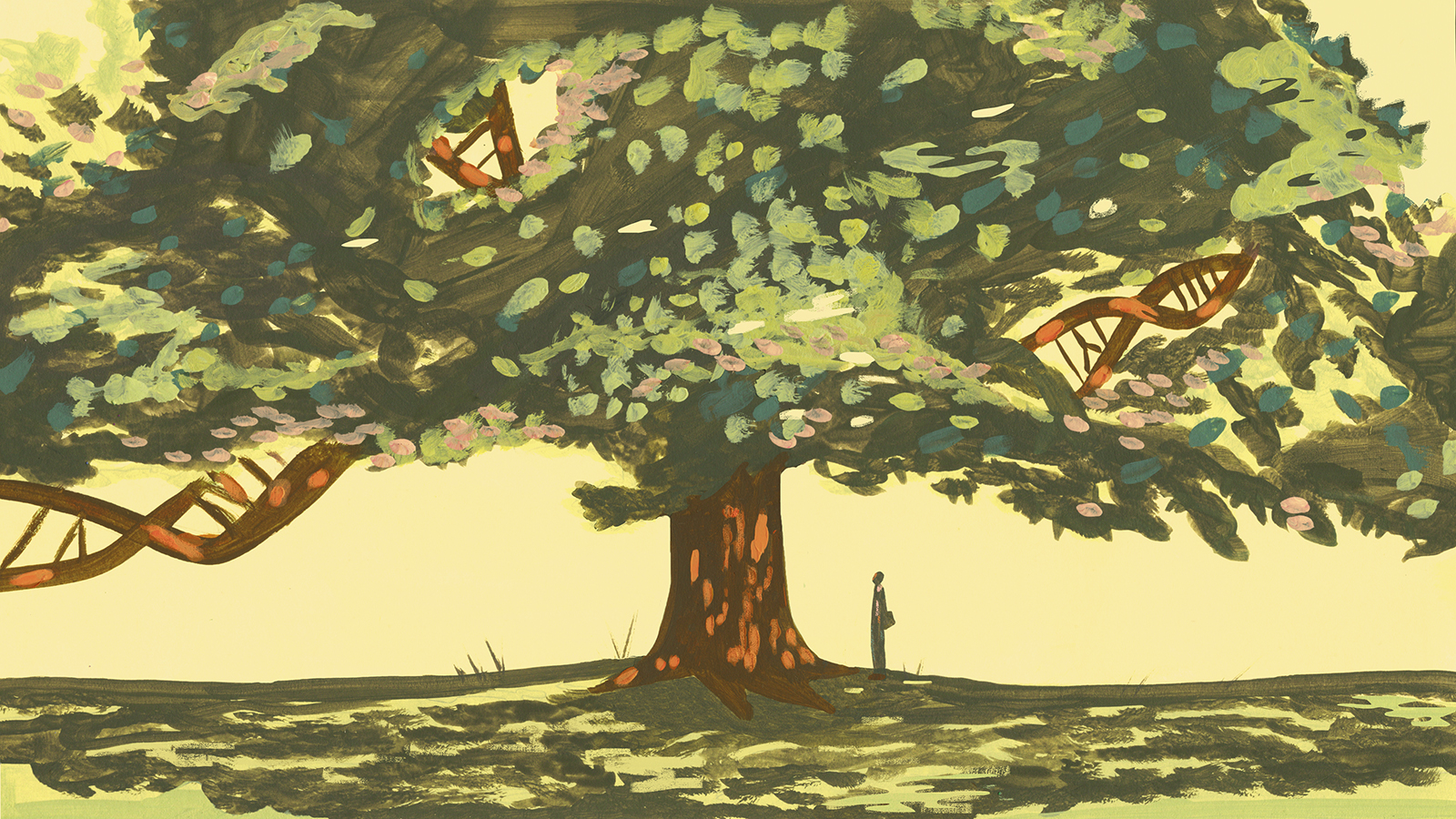
Grist
Meet the peach that traveled the Trail of Tears and the elders working to save it
- Nov 20, 2024, 1:30 AM

It’s November and it’s unseasonably warm as John John Brown, a Muscogee elder, works to replant peach saplings. “I haven’t had much luck growing them from seed,” he says. The reason, he thinks, is because peaches need lower temperatures.
Around him, tiny peach trees the size of pencils stand above the browning grass underneath their parent tree. Brown harvested around 200 peaches this year from his small orchard — enough for his family and neighbors — but he had competition: A fox has been poking around. “The animals know when the peaches are ripe quicker than I do,” Brown laughs. “They start coming in and stealing my peaches.”
Brown’s peaches aren’t your everyday peaches, they’re heirlooms: direct descendants of peach seeds brought across the continent on the Trail of Tears. Brown calls them “Indian peaches” while other Muscogees call them “Trail of Tears peaches.” There has been little research on this particular variety, and it’s unknown just how many genes they share with commercial peaches. While grocery store peaches are soft and fleshy, Indian peaches don’t get much bigger than a lemon and are extremely firm but sweet.
The Indian peach is threatened by climate change. Where hurricanes, flooding, and higher temperatures have massive impacts on crops, including peaches, around the nation, heirloom varieties, like the Indian peach, are also threatened. This fruit, that crossed a planet, carried by traders and travelers, and eventually by a few Muscogees along The Trail before they found a new home outside Sapulpa, Oklahoma, is a connection to another time and place.
“One of the greatest gifts Creator gave me is these peaches and the ability to share these trees with our community and everyone,” Brown said.

There are only 50 Indian peach trees on the Muscogee reservation that Brown knows of — some grow in some peoples’ backyards, and some at a local daycare — and between climate-driven changes to growing cycles and high temperatures, they face a difficult future. Luckily, they have people like Brown working to protect them.
Peach cultivation is thought to have begun around 8,000 years ago in the Yangtze Valley in China. One of the first mentions of peaches in literature appears in the fictional novel Journey to the West, written in 1592, that describes peaches as a fruit that could grant longevity and “make a man’s age equal to that of Heaven and Earth, the sun and the moon.”
From China, peaches made their way to Europe, then to the Americas in the 1600s on Spanish ships — the beginning of a kind of crop exchange between the continents: potatoes and tomatoes from South and Central America went to Europe while peaches made their way to the Georgia coast, and quickly, into Indigenous diets.
“Indigenous people were already caring for and managing forests and other kinds of tree foods,” said Jacob Holland-Lulewicz at Pennsylvania State University, who studies archaeology and ethnohistory. “That would have allowed them to adopt peaches super quickly and know really well how to create healthy peaches.”
Within a few decades, and with the help of a vast network of trade routes, peaches made their way across the continent, as far as the Southwest, where tribes like the Navajo sun-dried and stewed them.
Around 1780, thousands of peach trees tended by the Seneca and Cayuga tribes along the Finger Lakes in western New York State were destroyed by President George Washington, in an attempt to ethnically cleanse Indigenous peoples from the region. Washington wrote in a letter to one of his generals that the goal was “to lay waste all the settlements.” He added, “It will be essential to ruin their crops now in the ground and prevent their planting more.”
In 1830, President Andrew Jackson signed into law the Indian Removal Act that led to the Trail of Tears — a death march that forced around 60,000 Indigenous people to leave their homes and move west, across the Mississippi River, to Oklahoma.
Vernon Courtwright grew up eating Indian peaches. Now 75 years old, the Muscogee elder and veteran says his family brought Indian peach seeds and planted them when they were done walking The Trail. “That was the beginning of our life and the peaches’ life in Oklahoma,” he said. When he was a child, his grandmother, Emma Bruner, was the one who taught him about how to grow and tend to the fruit. “We grew up eating these peaches.”
Courtwright says in the 1970s, he began to see Indian peaches disappear. With each passing year, there was less on the landscape. “I just knew that our orchard had to be taken care of,” he said. When his grandparents passed, he took on the work of caring for the trees, and eventually, met John John Brown, who helped cultivate seeds and saplings to give out to other Muscogees.
“It’s our legacy,” said Courtwright. “It’s my family’s legacy to the tribe.”
Georgia, the Peach State, produces nearly 25,000 tons of peaches every year, but falls far behind California, which produces nearly 475,000 tons each year. Globally, nearly 24 million tons of peaches are grown each year, with most coming from China.
Climate change is having a big impact on those numbers, though. One of the biggest threats to the peach industry is rising temperatures. Peaches need “peach chill” — a certain amount of time in temperatures that are under 45 degrees Fahrenheit. Without adequate peach chill, peach trees won’t produce, and with rising temperatures, blooms will sprout too early. In 2017, around 70 percent of peach losses could be attributed to lack of peach chill. “Lack of chill is something that we think is going to be the biggest issue for us and our industry,” said Dario Chavez, a peach geneticist at the University of Georgia. “If you are in a northern climate, you don’t worry too much about the chill. But I think they’re starting to see the physiological responses to issues with chill.”
Then there are extreme weather events supercharged by climate change that can inflict immediate, wide-spread damage. This year, Hurricane Helene killed at least 226 people. It also devastated Georgia’s agricultural economy to the tune of nearly $6.5 billion dollars.
But Helene’s path was only the beginning. Hurricanes bring flooding, which is especially bad for peaches — peach trees don’t like to be too wet and can prematurely drop fruit if under water. They’re also susceptible to diseases like brown rot, which can be triggered after heavy storms.
For the Indian peach, peach chill and extreme weather aren’t as big a threat as they are in the South. However, Oklahoma is expected to become around two and a half degrees hotter in the next 20 years. Even though the peach is a resilient plant, peach chill will become an issue. Natural disasters like floods become more of a threat to the lives and livelihoods of tribal members — tribal lands in Oklahoma are the most prone to flooding in the state.
But to protect Indian peaches, and a little part of tribal history, John John Brown has been giving out saplings for the better part of a decade to anyone interested in growing them.
Brown regularly travels to Georgia and Alabama to visit the proposed Ocmulgee Mounds National Park and Preserve — located on Muscogee homelands. On his drives, he often passes peach orchards filled with the variety most Americans are used to. “You don’t think they would be able to produce peaches,” he says as he eyes the tightly-pruned rows. “They cut ’em back real small.”
He goes down to the homelands to remind settlers in the area that the Muscogee survived despite the United States attempts at genocide and demos making canoes and bows the traditional way out of local wood during the annual Ocmulgee Indigenous Celebration. To Brown the peaches are a symbol of resilience.
“When our ancestors brought these peaches up from the South you think about how devastating it was, to lose loved ones, and not know if the seeds will sprout,” he said. “I do this to honor them, and their strength.”


